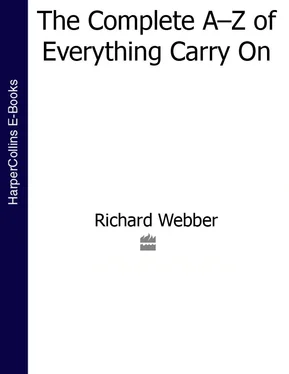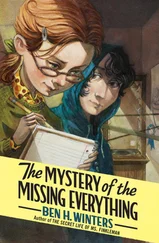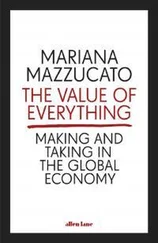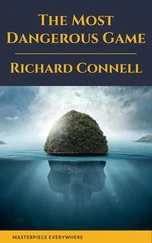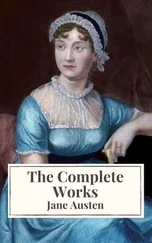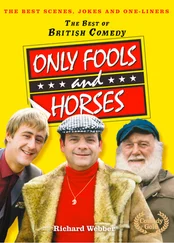1971
After the release of the latest period piece in February, Talbot Rothwell returned to his lavatories and bidets for At Your Convenience , which reunited Richard O’Callaghan and Jacki Piper. In draft form, the script started out as Carry On Working , but by the time filming began on 22 March the title had changed. The cast travelled to Brighton Pier for some fun at the fair between Monday 3 and Wednesday 5 May and a good time was had by all, but when the film was released in December it met with a lukewarm response from audiences and took several years to recoup its original production costs, perhaps resulting from the way the film portrayed unions and shop stewards. But if audiences didn’t rush to watch At Your Convenience, normal service was resumed with the next offering from the Rogers/Thomas production line because it was back to the world of starched uniforms and stethoscopes with Carry On Matron.
The script was the work of Talbot Rothwell again, but could easily have been original writer Norman Hudis if a proposed contract, originated in November 1969, had been executed. By then, however, Hudis was based in the States and for Rogers to have employed the writer on Matron while he was resident in the US would have cost his budget an additional fee, payable to the Writers’ Guild to fund its pension and health benefits. Following correspondence between Rogers’ office and the Guild, the contract was cancelled and Rothwell hired instead. Talbot’s contract was issued in May and the script delivered in August. All the familiar faces were recruited for this enjoyable slice of traditional Carry On fare, filmed between 11 October and 26 November; the finished product hit the screens the following spring.
1972
By the time Matron was released in May, filming had begun on the twenty-fourth Carry On. With package holidays becoming increasingly popular in Britain, it was time for Rogers and Thomas to turn their attention to the sun-seeking adventures of a bunch of oddballs thrown together by circumstance. Filmed between 17 April and 26 May, Abroad became one of the genre’s strongest entries and Charles Hawtrey’s swan-song. It was the last time he’d appear in a Carry On . Meanwhile, location work, which June Whitfield, making her second appearance in the series, thought might take place in sunnier climes, ended up being in the grounds of Pinewood. The furthest the cast travelled was Slough to film scenes showing trippers climbing on to the coach taking them to the airport.
1973
It was off to Brighton again for location work on Carry On Girls (originally discussed as Carry On Beauty Queen ) which went into production on 16 April. The first day’s filming involved scenes where Larry (a rather green photographer played by Robin Askwith) is asked to take some snaps of busty model Dawn Brakes (Margaret Nolan) on Fircombe beach. Filming was completed by 25 May and the picture released in November. The highly successful Carry On London! stage production, which kicked off in the autumn, put paid to thoughts regarding a second Carry On that year, which had become the norm.
1974
A return to period comedy for the only big screen production in 1974. Sadly, it would be Sid James’s last appearance, as well as Rothwell’s final script. When the writer became ill before completing the screenplay for Dick , producer Peter Rogers stepped in and completed the script himself. Meanwhile, Jack Douglas, as Sergeant Jock Strapp, played his biggest role to date. The idea was based on a full-length script submitted by Lawrie Wyman and George Evans, but it was regular scriptwriter Talbot Rothwell who, for £10,000, was commissioned to write the screenplay, brought to life by the cast between early March and mid-April. The film was released in July.
1975
While the Carry On Laughing television series was being screened on ITV, Carry On Behind brought together a group of regular faces and some occasionals. With Sid James touring Australia in a play, and Barbara Windsor performing her one-woman show in New Zealand, two of the most popular performers were missing. The cast, however, still boasted such names as Kenneth Connor, Kenneth Williams, Peter Butterworth, Joan Sims, Bernard Bresslaw and Patsy Rowlands, with new faces including Windsor Davies and German-born actress Elke Sommer, delivering a well-crafted performance as renowned archaeologist, Professor Anna Vooshka.
The screenplay, written by Dave Freeman, was equally innuendo-laden as his predecessor’s output; Freeman had originally submitted a script titled Love On Wheels back in 1973, which was later altered to Carry On Carrying On , before finally becoming Behind by the time Freeman delivered the screenplay in January 1975. The film was shot between mid-March and mid-April and released in December, and although many argue that the Carry On series had lost its way by this point, Behind was an amusing piece of work continuing in the same vein as those which had gone before.
1976
By the time the cast of Carry On England had fallen in during May, Sid James, the linchpin of so many films in the series, was dead. While performing in a production of Sam Cree’s The Mating Game in Sunderland, he collapsed and died – he was sixty-two. Such a loss would inevitably cast a shadow over the production when the cast arrived at Pinewood.
Filming began on 3 May until 4 June, and despite some familiar faces in the cast, including Kenneth Connor, Joan Sims, Jack Douglas and Peter Butterworth, a clutch of new faces were placed in prominent roles, such as Patrick Mower and Judy Geeson. This, combined with a script written by David Pursall and Jack Seddon, experienced in their field yet new to the Carry On series, resulted in a different style of film, unfamiliar to many fans of the genre. For me, it’s the most disappointing of all the Carry On pictures, and upon its release in October, England failed to satisfy the cinema-going public and was removed from the schedules by some cinemas days after receiving its initial viewing. It would be some time before the film clawed back its production costs.
1977
In That’s Carry On , Rogers and Thomas offered a nostalgic trip back in time celebrating those golden moments from their catalogue of films. The compilation, with an original screenplay by Tony Church, was introduced by Kenneth Williams and Barbara Windsor, and contained all the classic scenes you’d ever want to see. After Gerald Thomas and editor Jack Gardner spent nearly six weeks choosing the best sequences, they sat down in a theatre to check their selections, only to find the film ran for six hours. Eventually they streamlined the output and although it didn’t initially set the world on fire, the film has over the years become a welcome and valued addition to the Carry On library, reminding fans of the halcyon days when Norman Hudis and Talbot Rothwell’s scripts had audiences rolling in the aisles.
1978
That’s Carry On was released in February, and the thirtieth film, Emmannuelle , went into production in April. When the original script by New Zealand-born Lance Peters was far too blue, experienced television writer Vince Powell was hired to tone it down. With many of the true Carry On ers entertaining audiences in the sky, and some regarding the film too smutty to be classed as a Carry On , Kenneth Williams, Jack Douglas, Joan Sims and Peter Butterworth were the only regulars present. Playing alongside Williams as his wife, Emmannuelle Prevert, was newcomer Suzanne Danielle, a mere fledgling in the world of film. But her portrayal was expertly executed, a performance defying her lack of big-screen experience.
Читать дальше
